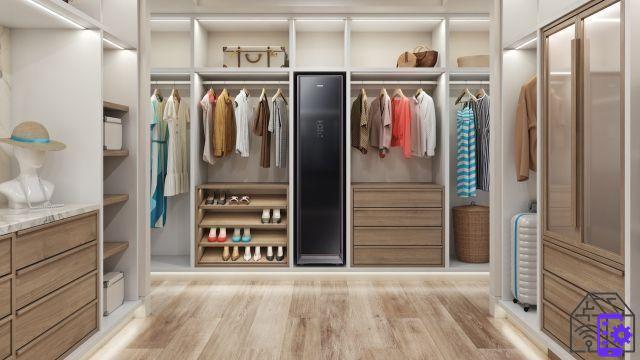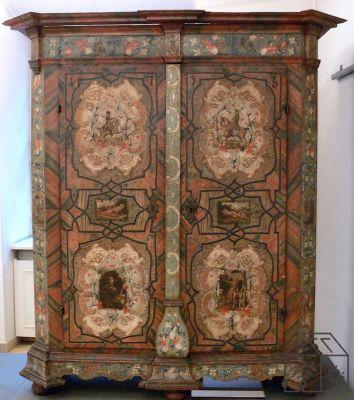
Have you ever thought of the wardrobe as a hi-tech object? Probably not, yet there are not a few models of smart cabinets on the market. This brings us, therefore, to the umpteenth object of daily use that makes use of technology to improve the user experience. A feature that makes the wardrobe the perfect protagonist of our “How has it changed” column. Without going too far, let's start immediately to discover the wardrobe history, an object whose origins even date back to the Hellenistic age.
“Armarium”, where the history of the wardrobe began
Every morning we wake up and open the wardrobe doors to try to decide what to wear before leaving the house, yet we never ask ourselves where such an essential object in our life originated from. In any case, whether you have asked yourself this question or not, the answer is quite fascinating. The origins of the wardrobe, in fact, date back toHellenistic age, when furniture with shelves began to be used, supported by vertical sides and closed by front doors. A structure that we know well, and which has since evolved over the centuries. Only in Roman times, in fact, there was a real definition of the wardrobe, better known as "wardrobe", because intended to keep weapons. A piece of furniture obtained from a recess in the wall, closed by doors and internally divided into two compartments, one lower and one upper.

Pompeii has brought us several examples, which shows us that the history of the wardrobe is obviously Italian. In the early Middle Ages, for example, it was the churches of our country that marked the evolution of this piece of furniture, which began to be used by clergymen to keep the Eucharist, along with relics, books and sacred objects. A destination of use very different from that of the Roman era, although still far from ours. The Renaissance, however, it marked an important turning point in the evolution of the object. It is at this time that the cabinet structures begin to become leaner and better decorated - and, above all, not carved into the walls -. And a clear distinction is also beginning to emerge between the wardrobes intended for churches and those intended for homes, which become more and more similar to those we know today.
History of the wardrobe: from furniture to hi-tech object
Over the centuries, the wardrobe has undergone an incredible evolution, albeit outside the Italian borders. In fact, it is in France that furniture experiences its greatest phase of growth from an aesthetic point of view. In 1600 the i cabinets rich in friezes and inlays, which anticipate the styles of the French kings, resulting in highly decorated and refined wardrobes. The aesthetic changes, therefore, but the internal structure remains almost unchanged: horizontal shelves intended to accommodate clothing of all kinds - a good step forward if we consider that just a few centuries earlier they contained weapons and sacred books -. After the Louis XIV and Louis XV styles, therefore, the wardrobes begin to become pompous furnishing accessories for the rich. A feature that they will lose with the modern era, when aesthetics begin to give way to functionality.
Of course, jumping from Louis XIV to the hi-tech wardrobe is a fancy flight, yet it makes sense. As we have said, the structure of the furniture has not changed particularly over the centuries, but its method of use absolutely has. And this has also happened in the last few decades, when technology companies have begun to release to the market cabinets equipped with built-in sanitization systems. A feature that responds to the needs of a frenetic world, in which pollution - and more - has now become an enemy to fight. Once again, the structure remains unchanged, but the piece of furniture is equipped with a technology that ensures the total elimination - or almost - of germs and bacteria, in addition to that of bad smells. This completely revolutionizes the history of the wardrobe, transforming it from a piece of furniture capable of containing things to an object designed for personal well-being. Yet the shape still remains unchanged. And maybe it will remain so forever.
 Samsung Appliances JetSteam AirDresser Walk-in Closet ...
Samsung Appliances JetSteam AirDresser Walk-in Closet ...
- Jet Steam: eliminates bacteria, viruses and mites through powerful jets of steam that penetrate deep into the tissues; ...
- Jet Air: removes dust quickly and silently through the powerful jets of air introduced into the cabin from the ...
- Deodorizing filter: refresh your clothes by removing up to 99% of odors caused by tobacco, sweat, food and washing ...


























